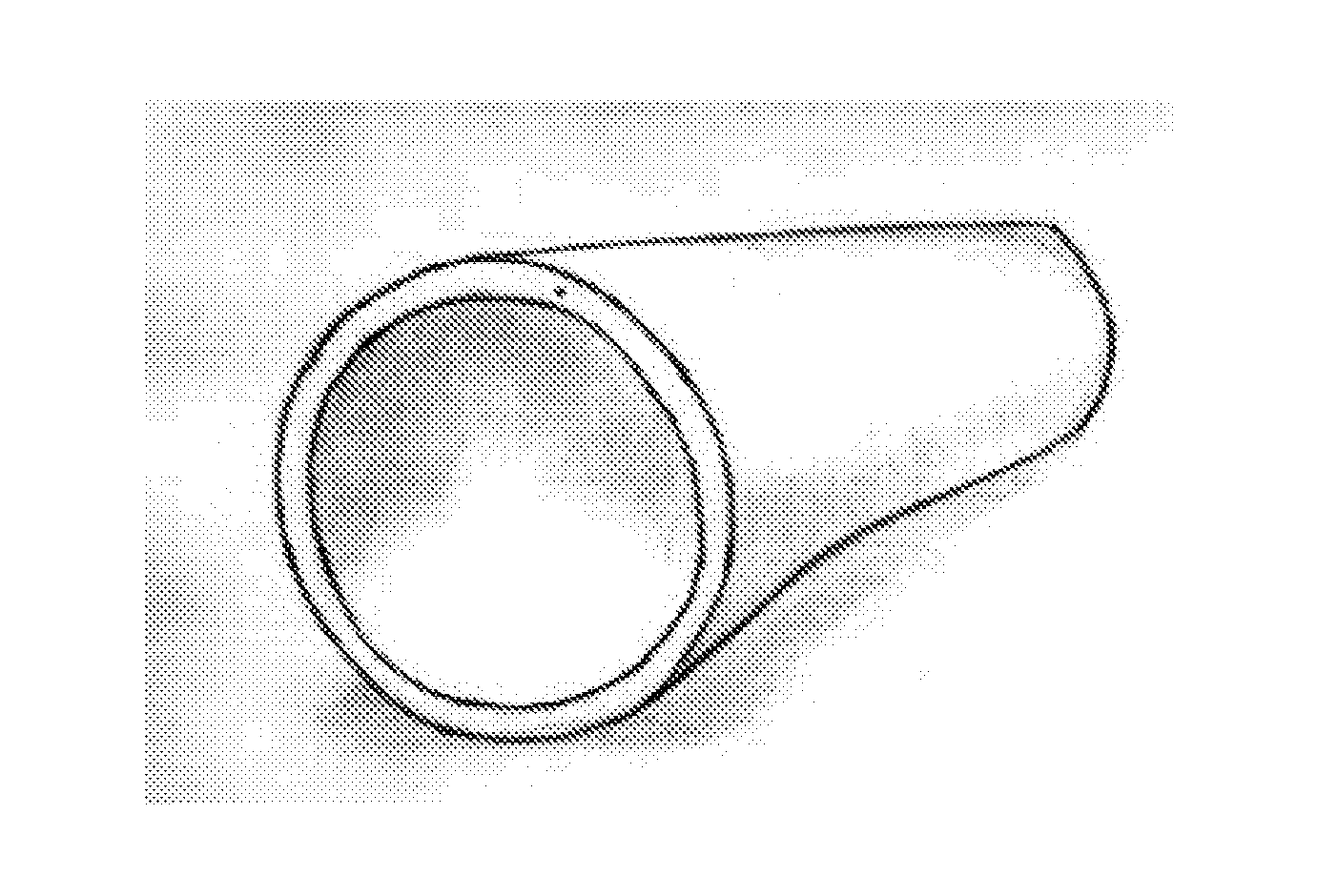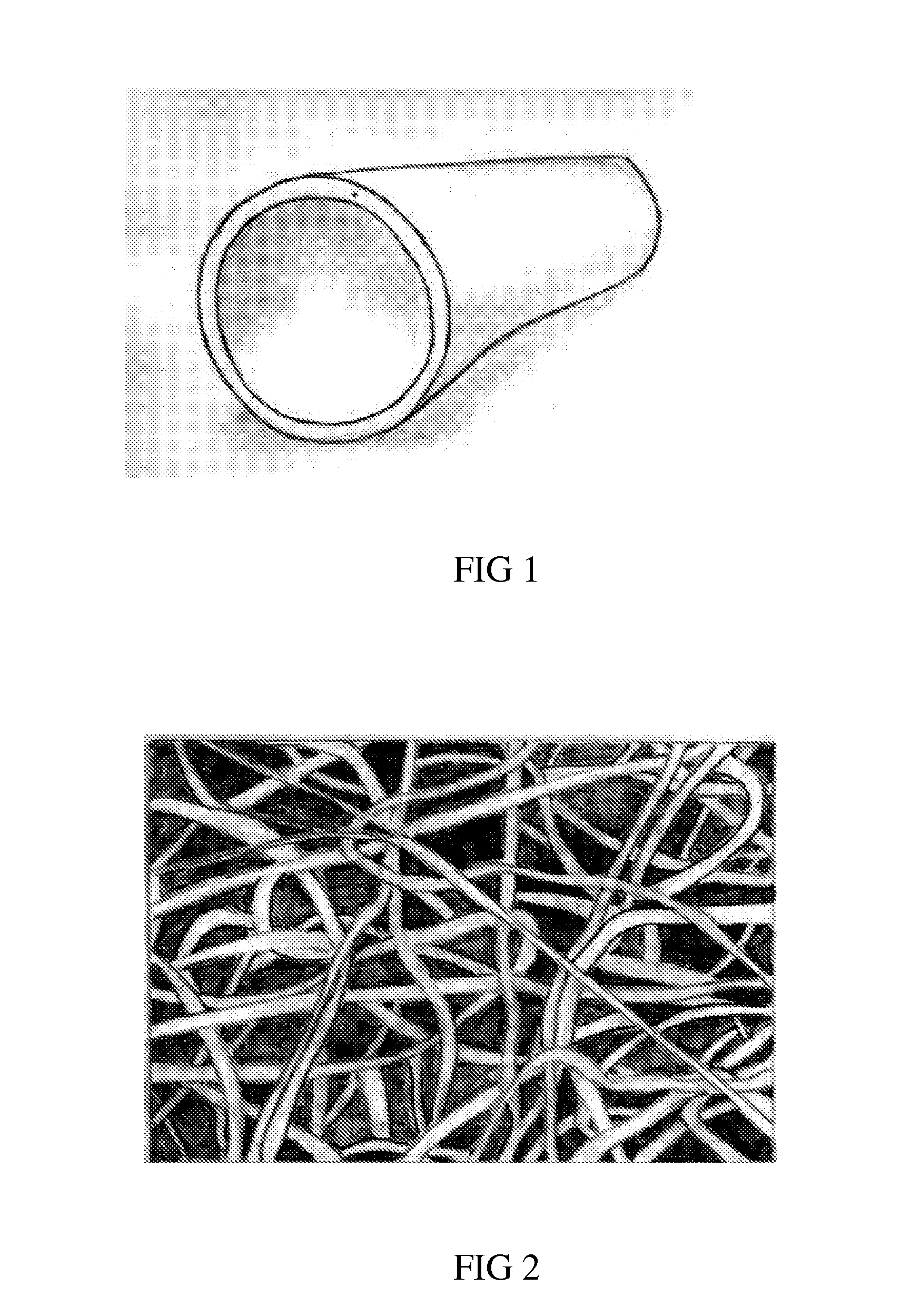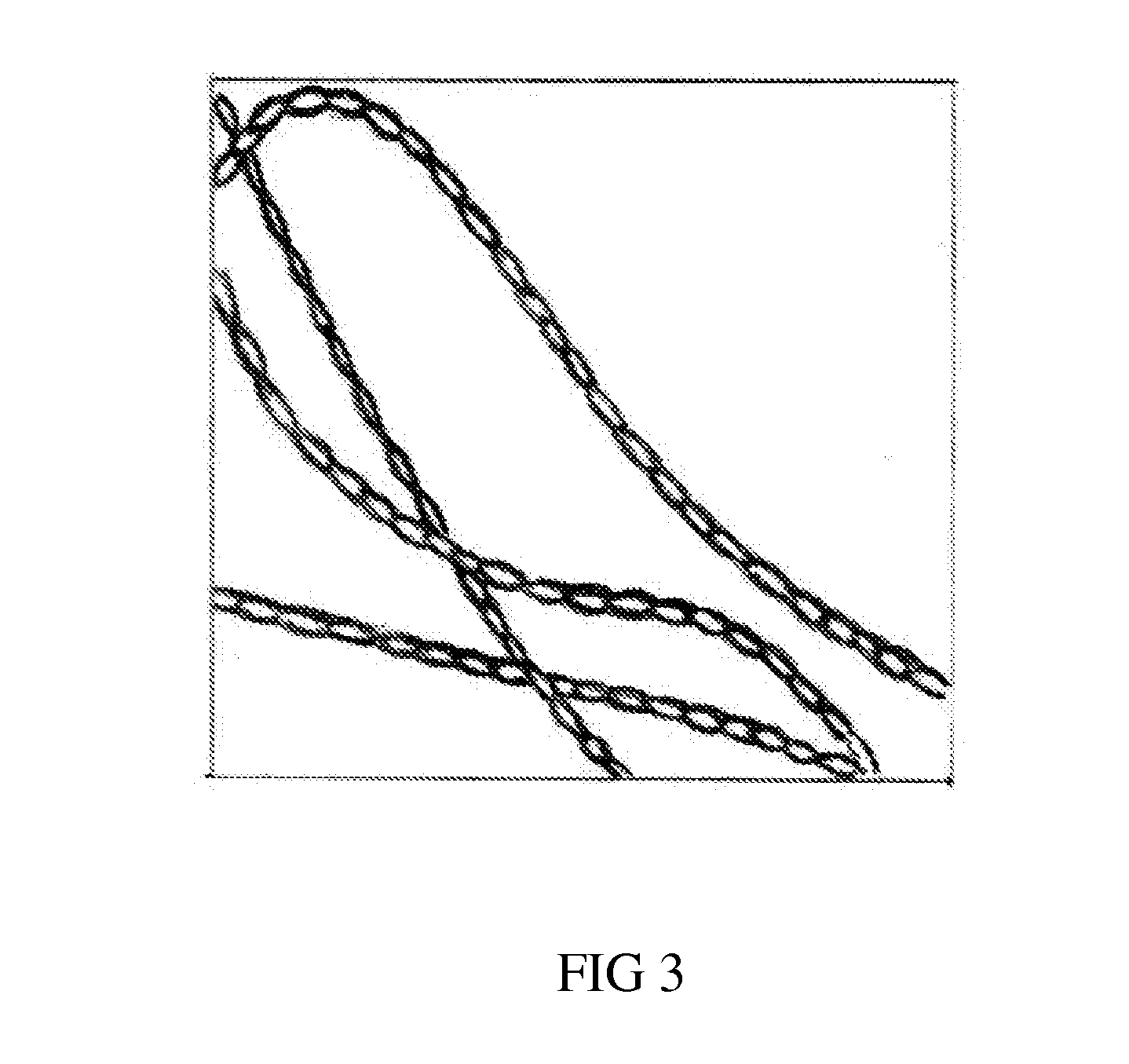Tissue-Engineered Vascular Graft and Its Fabrication Approach
a technology of tissue engineering and vascular grafts, applied in the field of tissue engineering, can solve the problems of large disadvantages of complex blood vessel replacements, small-diameter vascular grafts (less than 6 mm), and prolong cell culture and seeding time, and achieve long lifespan, promote the regeneration process of the vessel wall, and high patency
- Summary
- Abstract
- Description
- Claims
- Application Information
AI Technical Summary
Benefits of technology
Problems solved by technology
Method used
Image
Examples
Embodiment Construction
[0016]A synthetic polymer with a long biodegradation period-polycaprolactone (poly(e-caprolactone (PCL) is used to fabricate vascular graft scaffolds due to its suitable and well-known mechanical properties (flexibility and strength). Moreover, this polymer is biocompatible and bioresistant, the degradation rate of PCL fibers, spun by electrospinning, is from three months up to a year. This PCL degradation rate contributes to the long-term support of the necessary mechanical graft properties to grow into functional native vessel; the polymer's hydrolytic degradation and blood vessel regeneration are concomitant and coordinated in time. No toxic substances are formed as a result of the biodegradation: water and caproic acid.
[0017]The electrospining technique used to fabricate scaffolds enables to spin micro- and nanofibers and porous structures from polymer solutions and melts. This method relates to fiber fabrication within a strong electric field generated between two electrodes be...
PUM
| Property | Measurement | Unit |
|---|---|---|
| distances | aaaaa | aaaaa |
| flow rates | aaaaa | aaaaa |
| voltages | aaaaa | aaaaa |
Abstract
Description
Claims
Application Information
 Login to View More
Login to View More - R&D
- Intellectual Property
- Life Sciences
- Materials
- Tech Scout
- Unparalleled Data Quality
- Higher Quality Content
- 60% Fewer Hallucinations
Browse by: Latest US Patents, China's latest patents, Technical Efficacy Thesaurus, Application Domain, Technology Topic, Popular Technical Reports.
© 2025 PatSnap. All rights reserved.Legal|Privacy policy|Modern Slavery Act Transparency Statement|Sitemap|About US| Contact US: help@patsnap.com



